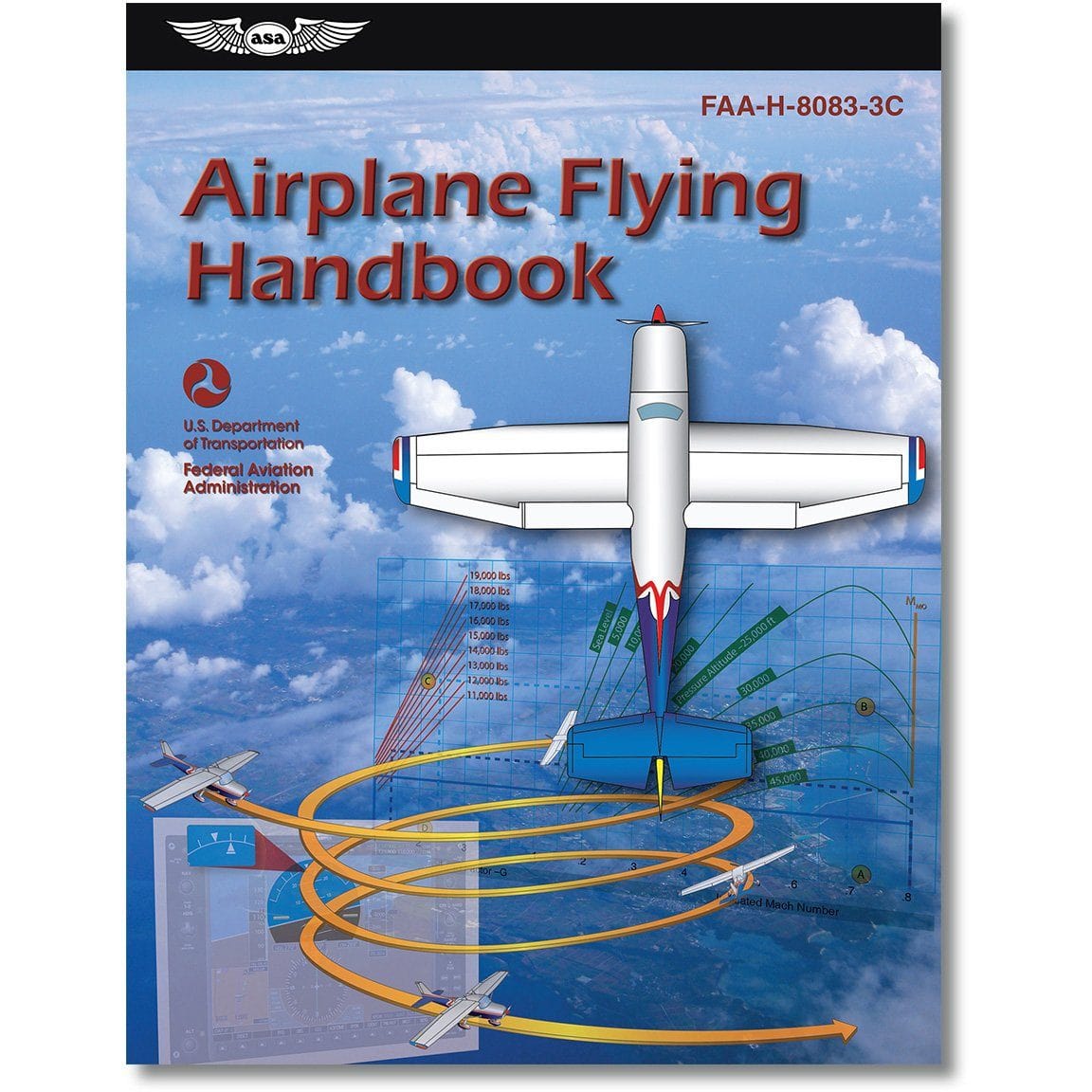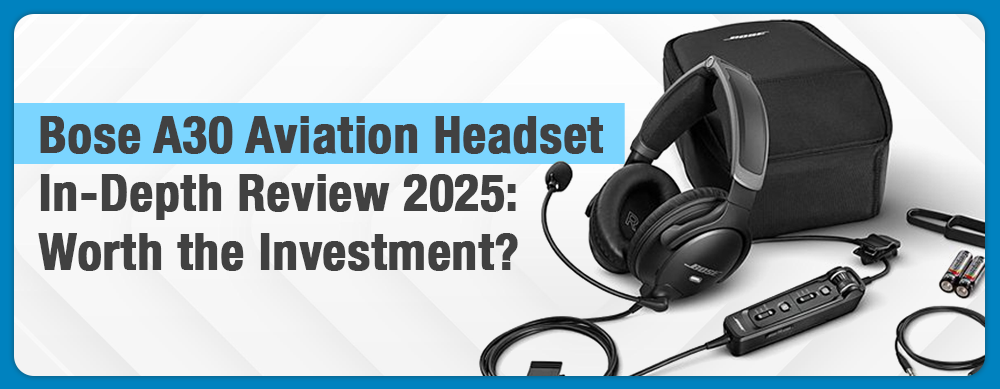Una pregunta común que escuchamos de los estudiantes de piloto es: "¿Cómo puedo superar el mareo durante el entrenamiento de vuelo?" Esto nos inspiró a escribir este artículo.
El mareo es un problema frecuente entre los pilotos en formación, que suele provocar náuseas y malestar general durante las clases de vuelo. Puede resultar especialmente frustrante para quienes están decididos a que su experiencia de formación sea fluida.
Si bien los síntomas del mareo pueden ser molestos, no se preocupe: es un problema que se puede solucionar. En este artículo, compartiremos estrategias que los pilotos en formación pueden usar para superar las "náuseas de la lección de vuelo".

El papel de los oídos en el mareo por movimiento
¿Sabías que el oído interno desempeña un papel en el equilibrio y la percepción del movimiento? Esto hace que el oído interno sea un factor clave en lo que respecta al mareo por movimiento. Durante el entrenamiento de vuelo, el oído interno puede confundirse con el movimiento del avión, lo que provoca mareos.
Para abordar estos desafíos, consultamos en forma privada a instructores de vuelo y pilotos experimentados, quienes recomendaron varios métodos diferentes para ayudar a brindar formas naturales de tratar el mareo por movimiento.
Estrategias eficaces para combatir el mareo en el entrenamiento de aviación

1. Coma comidas ligeras
Una de las mejores estrategias para combatir las náuseas es tener cuidado con lo que comes. Es mejor evitar volar con el estómago vacío, pero es igualmente importante evitar los alimentos grasosos, picantes y pesados.
En lugar de eso, opte por una comida ligera antes de su vuelo, ya que esto puede ayudarle a tener la energía y el estado de alerta que necesita para el entrenamiento de vuelo, pero también ayudará a prevenir el mareo sin hacerle sentir demasiado lleno.
El Monte Sinaí recomienda tratar de comer alimentos livianos y de fácil digestión, como tostadas o galletas saladas. Las bebidas carbonatadas, como el ginger ale y las frutas no ácidas, o una pequeña porción de proteína también pueden ser opciones ideales.
2. Mantente hidratado
Mantenerse adecuadamente hidratado es importante, beba mucha agua antes y durante sus lecciones de vuelo.
La deshidratación puede provocar dolores de cabeza y exacerbar los síntomas del mareo, así que asegúrese de estar bien hidratado bebiendo pequeñas cantidades de agua durante el proceso de entrenamiento de vuelo.

3. Aire fresco y ejercicios de respiración
El aire fresco puede suponer una gran diferencia a la hora de aliviar los síntomas del mareo. Si es posible (y seguro hacerlo), abra las rejillas de ventilación para que entre aire fresco en la cabina. A veces, esta pequeña acción puede ayudar a reducir las náuseas y los sudores fríos, lo que hará que la experiencia de entrenamiento sea mucho más cómoda para usted.
Practicar ejercicios de respiración profunda puede ayudar a controlar la ansiedad y mantener la calma durante el vuelo. La respiración profunda aumenta el flujo de oxígeno al cerebro, lo que puede ayudar a estabilizar el estado físico y reducir la sensación de náuseas.
4. Remedios a base de hierbas
Para quienes prefieren remedios herbales naturales, el té de jengibre y las pastillas de raíz de regaliz son opciones populares entre los futuros pilotos. Se ha demostrado que el jengibre ayuda a aliviar las náuseas , mientras que la raíz de regaliz puede aliviar el estómago.
5. Aceites esenciales
Algunos pilotos que han superado con éxito las náuseas en vuelo atribuyen su éxito a aceites esenciales como la menta y la lavanda. Estos aceites pueden utilizarse para aliviar el mareo aplicándolos en las muñecas o inhalando su aroma.
Si el aroma es demasiado fuerte para aplicarlo directamente sobre la piel, colocar el aceite en un pañuelo o una goma para el pelo y usarlo en la muñeca es una excelente alternativa que se puede quitar fácilmente después del vuelo.
Estos remedios naturales son excelentes porque son suaves para el sistema y están libres de los efectos secundarios que pueden tener algunos medicamentos.
6. Oxígeno y medicamentos que no produzcan somnolencia
El oxígeno suplementario puede ser una herramienta disponible para ayudar a tratar el mareo por movimiento, especialmente en altitudes elevadas donde los niveles de oxígeno son más bajos.
Los medicamentos de venta libre que alivian el mareo por movimiento y los antihistamínicos se centran en prevenir el problema antes de que se presente. Estos medicamentos pueden ayudar a reducir los síntomas sin causar somnolencia, lo que le permitirá permanecer alerta y concentrado durante su entrenamiento de vuelo.
Tenga en cuenta que, antes de tomar cualquier medicamento, siempre es una buena idea consultar primero con un proveedor de atención médica.

7. La repetición aumenta tu tolerancia
Los instructores de vuelo suelen recomendar que los pilotos en formación aumenten gradualmente el tiempo de vuelo para desarrollar tolerancia a la incomodidad que pueden causar las maniobras de entrenamiento de vuelo, como la práctica de entrar en pérdida con el motor encendido y apagado. Comenzar con vuelos más cortos y aumentar progresivamente la duración puede ayudar al cuerpo a adaptarse a las sensaciones de volar.
Los pilotos experimentados destacan la importancia de la perseverancia y suelen decir que hay que "comer, dormir y beber como en la aviación". Saben que muchos pilotos superan el mareo por movimiento mediante la exposición repetida. Esta aclimatación gradual, poco a poco, ayuda al cerebro y al cuerpo a adaptarse al entorno único del vuelo, lo que hace que el mareo sea menos probable con el tiempo.
8. Concéntrese en el horizonte
Otro consejo útil es centrarse en el horizonte cuando se vuela. Tener una referencia visual puede ayudar a estabilizar la percepción del movimiento y reducir los efectos desorientadores que contribuyen al mareo.
9. Manténgase ocupado
Mantén tu mente ocupada con las tareas y participa activamente en el proceso de entrenamiento de vuelo para desviar tu atención de cualquier incomodidad que puedas estar sintiendo. Por ejemplo, trata de hablar en voz alta sobre cada acción que estás haciendo mientras la estás haciendo. Esto no solo te ayudará a distraerte, sino que también le permitirá a tu instructor de vuelo saber qué recuerdas o a qué has estado prestando atención.
Asumir un papel activo en el pilotaje o mantenerse involucrado en las tareas de navegación puede hacer que la experiencia de vuelo sea más interesante y dejar menos espacio para concentrarse en sensaciones incómodas.

10. Comuníquese con su instructor
Sea abierto y honesto acerca de cómo se siente en todo momento, recuerde seguir siempre el acrónimo IMSAFE . En algunos casos, la ansiedad puede exacerbar los síntomas del mareo. Comunicar y abordar cualquier ansiedad subyacente a través de técnicas de relajación o hablar con un instructor de vuelo podría ser beneficioso.
Mantener una comunicación honesta y abierta puede ayudarle a desarrollar gradualmente la confianza en sus habilidades para volar. Cuanto más confianza desarrolle, menos ansiedad sentirá y, a su vez, disminuirá la probabilidad de sufrir mareos.
Considere investigar técnicas como la atención plena, la meditación y las estrategias cognitivo-conductuales para ayudar a controlar los niveles de ansiedad.
11. Elija días con buen clima
La luz natural, menos viento y una vista despejada pueden ayudar a reducir la incomodidad en la cabina. Siempre que sea posible, elija horarios de vuelo en los que el clima esté despejado y la visibilidad sea buena.
Además, si eres abierto con tu instructor de vuelo, él puede ayudarte a controlar la turbulencia hasta que tu cuerpo se adapte a la sensación del aire agitado.
12. Tómate descansos
Si experimenta síntomas, dígale a su instructor de vuelo que necesita tomar un descanso. Permita que su instructor tome los controles de vuelo mientras usted se recupera. Un pequeño descanso puede ayudarle a restablecer el equilibrio y permitirle continuar con su lección de vuelo.
Prevención temprana del mareo por movimiento
El reconocimiento temprano de los síntomas puede evitar que una leve molestia se convierta en un episodio grave de mareo. Ante la primera señal de malestar durante el vuelo, comuníquelo a su instructor.
No te preocupes si te sientes frustrado, date tiempo, se requiere persistencia y paciencia para convertirte en un piloto profesional.
Con el tiempo, a medida que vaya adquiriendo más experiencia y su cuerpo se vaya adaptando a las sensaciones de volar, es más probable que los síntomas disminuyan. Así que tenga paciencia.
Consejos clave para combatir el mareo por movimiento
-
Evite tener el estómago vacío : coma una comida ligera antes de su vuelo y evite los alimentos pesados, picantes y grasosos.
-
Mantente hidratado : bebe agua antes y durante tus lecciones de vuelo.
-
Obtenga aire fresco : abra las rejillas de ventilación de la cabina (si es posible) y permita que circule aire fresco.
-
Practique la respiración profunda : esto ayuda a controlar la ansiedad y aumenta el flujo de oxígeno al cerebro.
-
Remedios naturales : Té o caramelos de jengibre, pastillas de raíz de regaliz, aceites esenciales de menta y lavanda.
-
Use oxígeno suplementario : especialmente útil en altitudes elevadas.
-
Medicamentos que no producen somnolencia : consulte con un proveedor de atención médica para obtener las mejores opciones.
-
Exposición gradual : aumente el tiempo de vuelo gradualmente para desarrollar tolerancia.
-
Concéntrese en el horizonte : esto ayuda a estabilizar su percepción del movimiento.
-
Aborda la ansiedad : utiliza técnicas de relajación y gana confianza en tus habilidades de vuelo.
-
Opte por un clima despejado : elija horarios de vuelo en los que la visibilidad sea buena y escoja altitudes con aire menos agitado.
-
Tome descansos : informe a su instructor de vuelo si necesita un descanso o interrumpir el entrenamiento hasta que su cuerpo se adapte.
Llevar
El mareo es un obstáculo al que se enfrentan muchos pilotos estudiantes, pero se puede superar y no te impedirá convertirte en piloto si ese es tu sueño y objetivo. Mantén el rumbo, céntrate en lo que quieres lograr y sigue probando diferentes técnicas hasta que encuentres la que funcione mejor para ti.
Lo más importante es ser honesto acerca de cómo y qué sientes, y pedirle a tu instructor que intente un proceso de entrenamiento gradual para que te vayas sintiendo más cómodo en el aire.
Con tiempo y persistencia, conseguirás tu licencia de piloto privado en poco tiempo.

|
Kit de piloto privado Gleim 2024 con preparación para el examen en líneaEl kit de piloto privado de Gleim es ideal para los nuevos pilotos estudiantes, ya que ofrece recursos completos y fáciles de entender para la certificación. Proporciona una experiencia de aprendizaje coherente y te proporciona todo lo que necesitas para tener éxito en la formación en aviación. |
Continúe aprendiendo con más guías de aviación:
-
Cómo funciona: Indicador de velocidad aerodinámica (guía detallada)
-
Indicador de velocidad vertical de aeronave (VSI): ¿cómo funciona?
¿Le resultó útil este artículo?
¿Crees que nos hemos olvidado de algo importante? ¡Cuéntanoslo en los comentarios a continuación!







